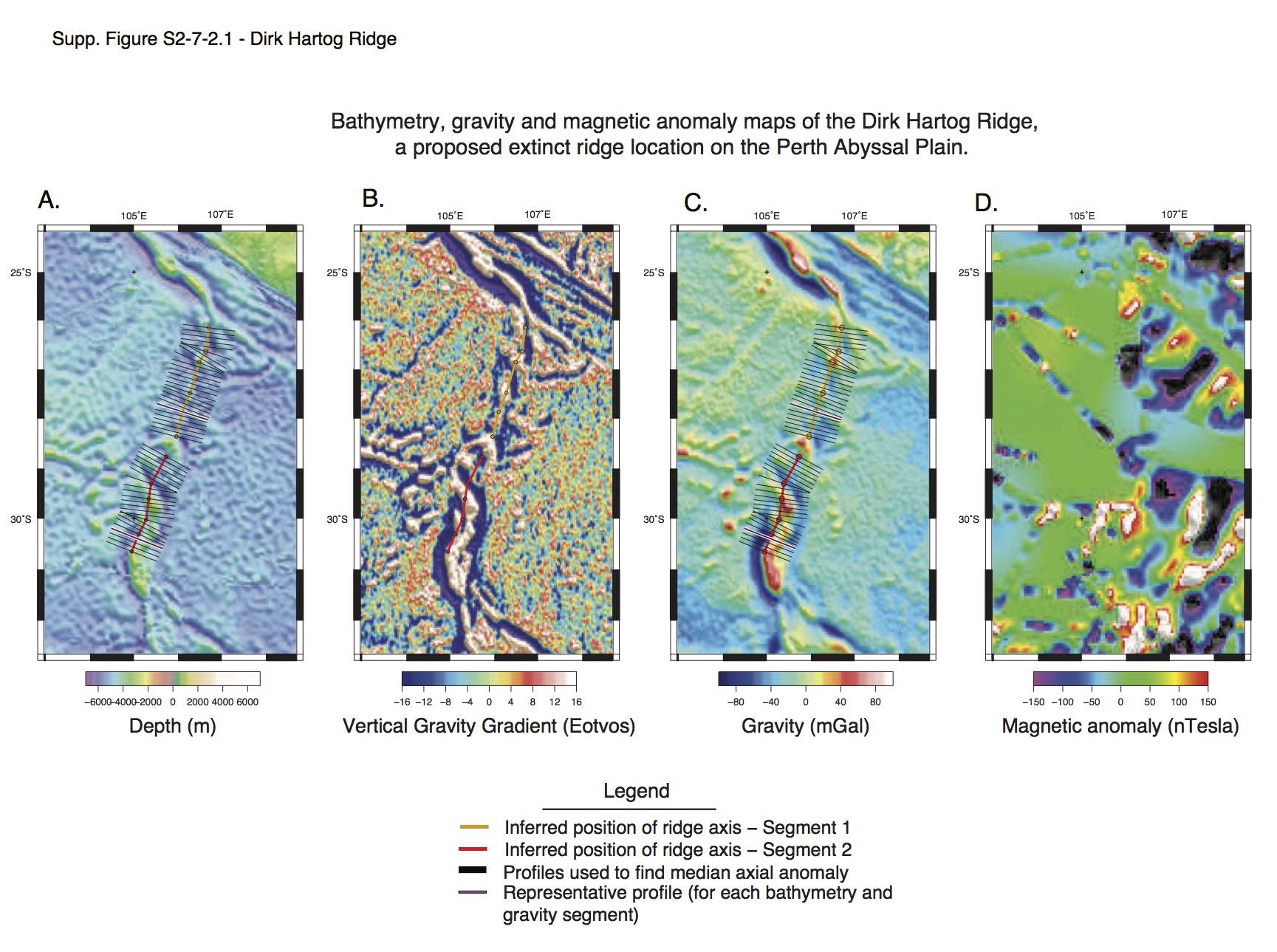The Dirk Hartog Ridge is approximately equidistant between the continental fragments identified and the West Australian margin, that are thought to represent congugate plate boundaries around the Perth Abyssal Plain extinct spreading centre. The ridge is structurally complex and alternates between deep troughs and elevated volcanic ridges from north to south. The morphology of the structure is not characteristic on an extinct ridge axis and profiles across the ridge demonstrate that depth at the inferred axis location has subtly deepened over a distance of approximately 60 km from the outside of the inferred flanking region, which would not be expected if the axis represents the youngest formed oceanic crust. Likewise, the axis does not feature a characteristic trough or negative gravity anomaly. The unusual depth profile could potentially result from later volcanic over-printing that may have resulted in long-wavelength subsidence. Despite having a morphology that is dissimilar to well-defined extinct ridge axes one segment of the Dirk Hartof ridge has similar relief and peak-to-trough gravity signal as the mean signal reported for primary tier ridges. We are unable to confirm that the Dirk Hartog ridge represents an extinct ridge axis, but acknowledge that it could possibly be such a feature and may have been modified after cessation by later volcanic constructions or deformation.
Reference:
Watson, S.J., Whittaker, J.M., Halpin, J.A., Williams, S.E., Milan, L.A., Daczko, N.R., Wyman, D.A., Tectonic drivers and the influence of the Kerguelen plume on seafloor spreading during formation of the Early Indian Ocean, Gondwana Research (2016), doi: 10.1016/j.gr.2016.03.009.
Whittaker, J.M., Williams, S.E. and Müller, R.D., 2013, Revised tectonic evolution of the Eastern Indian Ocean. Geochemistry, Geophysics, Geosystems, 14(6), pp.1891–1909.


